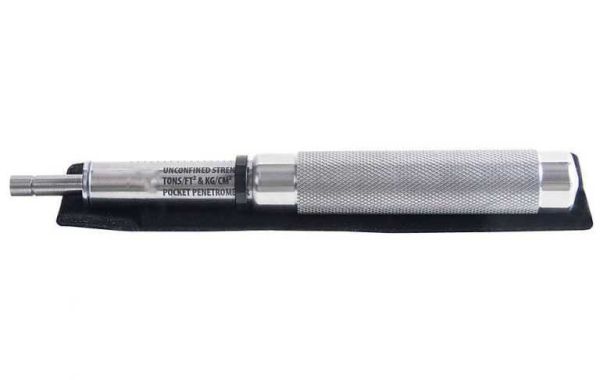In the field of geotechnical and civil engineering, understanding soil behavior is essential. Whether planning a high-rise building, laying the foundation of a bridge, or simply preparing a residential site, soil analysis provides the data necessary for safe and efficient construction. While large labs and complex machinery often take center stage, many engineers rely on portable, compact soil testing tools for quick assessments right on the job site. These handheld devices save time, reduce costs, and offer surprisingly accurate preliminary data.
This article explores some of the most useful compact soil testing tools that every engineer should have in their toolkit—starting with one of the most trusted: the pocket penetrometer.
1. Pocket Penetrometer – A Go-To Field Tool
Among compact soil testing tools, the pocket penetrometer stands out for its simplicity and practicality. It’s a small, spring-operated device used to estimate the unconfined compressive strength of cohesive soils. Popular in the field due to its portability, it provides immediate readings, especially in clay and silt-based soils.
To use it, engineers press the cylindrical end into the soil sample. The resistance pushes against an internal spring mechanism, which gives a direct strength reading in tons per square foot or kg/cm². While it doesn't replace lab testing, it offers reliable quick checks, particularly during site inspections or field classification.
Because of its ease of use and low cost, the pocket penetrometer is considered an essential tool for preliminary soil assessment.
2. Field Vane Shear Test Apparatus
Another handy and compact device is the field vane shear test tool. It’s designed to measure the undrained shear strength of soft clays directly at the site without disturbing the soil. The tool consists of a four-blade vane that’s inserted into the ground and rotated at a constant rate. Resistance to rotation provides a measure of the soil’s shear strength.
This tool is especially helpful in areas with soft and sensitive clays where traditional testing may be impractical or too invasive.
3. Hand Augers
Though more of a digging tool than a test instrument, hand augers are indispensable for collecting soil samples at various depths. Engineers use these compact spiral augers to bore into the earth manually. They come in a variety of sizes and can be used to retrieve samples for visual classification or for further lab testing.
Lightweight and easy to transport, hand augers are perfect for quick investigations or remote locations with limited access to machinery.
4. Soil Moisture Meters
Knowing the moisture content of soil is vital for evaluating compaction, strength, and stability. Compact soil moisture meters are electronic tools that give instant readings when inserted into the ground. They use either electrical resistance or capacitance to measure moisture levels.
Many models include digital displays, data logging, and even Bluetooth connectivity to sync with mobile apps. These meters are used in agriculture, landscaping, and construction to monitor how water content affects soil performance over time.
5. Sand Cone Density Kit
While this kit isn't as pocket-sized as some other tools, it’s still portable and widely used for measuring in-place soil density. It consists of a base plate, cone apparatus, and a jar filled with sand. After excavating a small hole at the test site, the kit determines the volume of the hole and calculates the soil's dry density.
This information is critical for assessing compaction quality—an important step in roadwork, embankment construction, and other structural projects.
6. Proctor Penetrometer
Compact and easy to use, the Proctor penetrometer is used during compaction testing to determine soil consistency. It's often applied in conjunction with the standard Proctor test in the lab, but it also has field-ready versions.
The tool measures resistance to penetration with a spring-loaded mechanism similar to the pocket penetrometer. It's typically used on fine-grained soils to gauge optimum moisture content for compaction.
7. Soil Classification Cards
While not a tool in the conventional sense, laminated soil classification cards are compact, durable, and extremely useful for engineers on-site. These cards help engineers quickly identify soil types based on texture, color, and grain size. Some include Munsell color charts or USDA classification systems.
They serve as great references for visual assessments and help with preliminary reporting during soil surveys.
Why Compact Tools Matter
The advantage of compact soil testing tools lies in their efficiency and practicality. They allow engineers to:
Perform immediate soil strength evaluations
Reduce reliance on laboratory testing for every sample
Identify potential problem areas quickly
Save time on remote or preliminary surveys
Make informed decisions in the field without delaying construction timelines
While these tools may not replace lab-grade testing, they certainly complement it. Their real value lies in convenience, portability, and rapid results.
Conclusion
From the dependable pocket penetrometer to advanced digital moisture meters, compact soil testing tools play a critical role in modern geotechnical and construction engineering. These tools empower engineers to conduct rapid, on-site evaluations that guide design, construction, and safety decisions.
Every field engineer should consider building a compact toolkit that includes a mix of mechanical and digital devices tailored to their specific project needs. Doing so not only improves workflow but also ensures more accurate, informed decision-making when it matters most.








